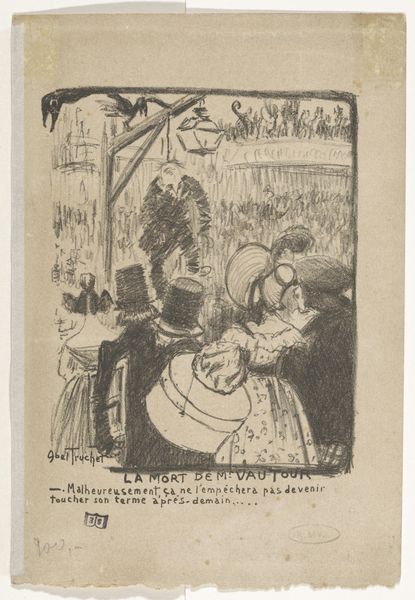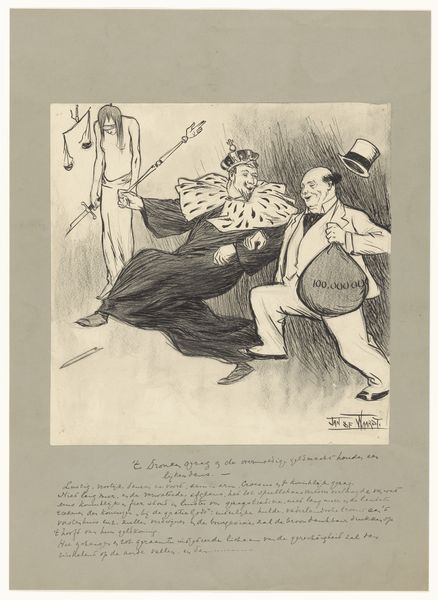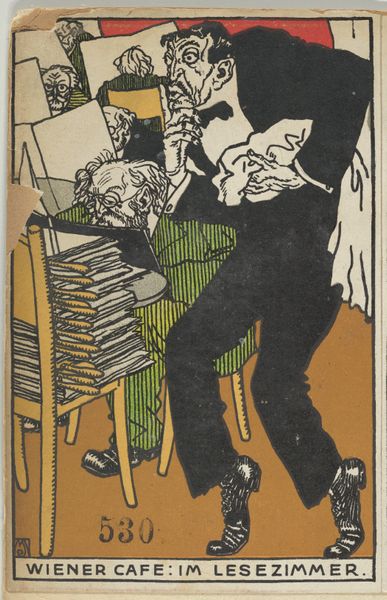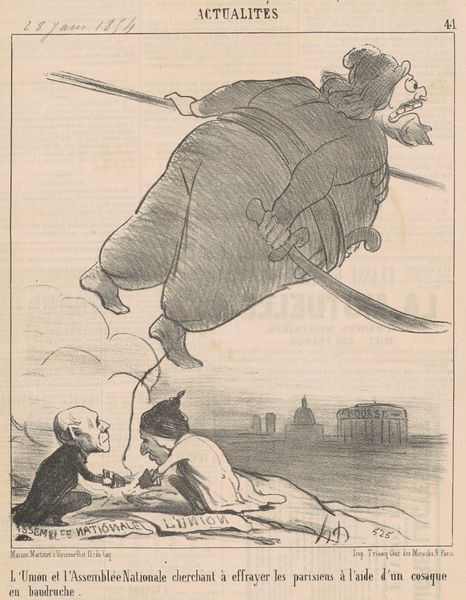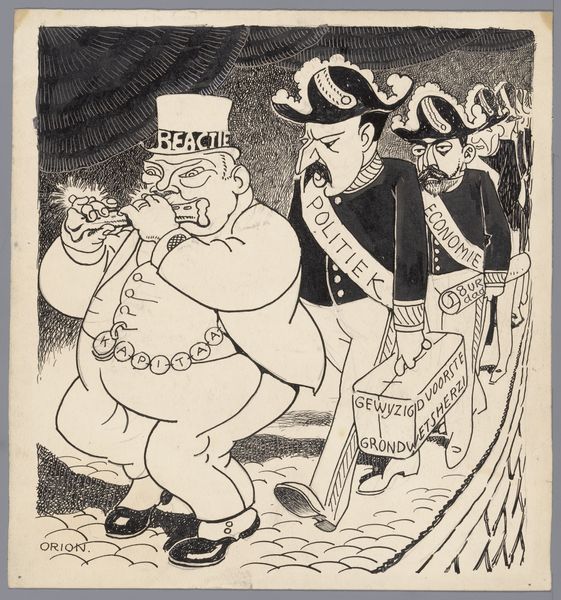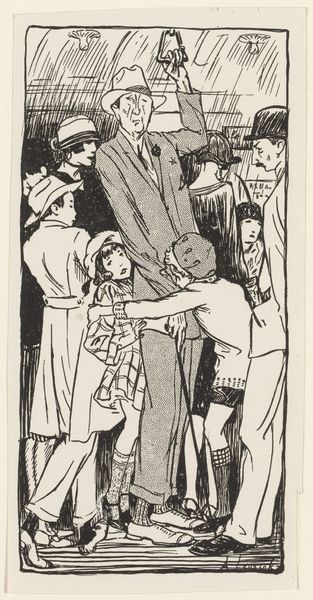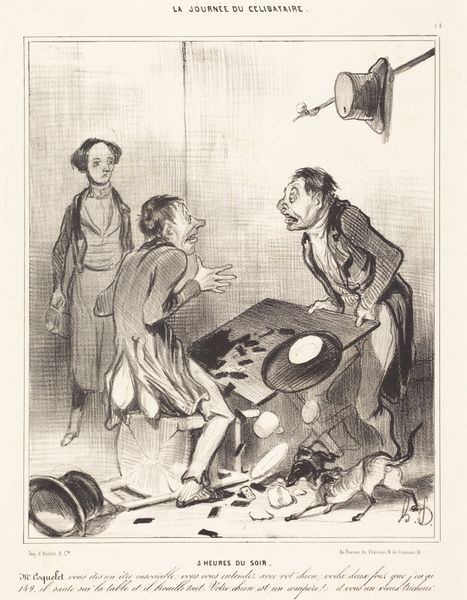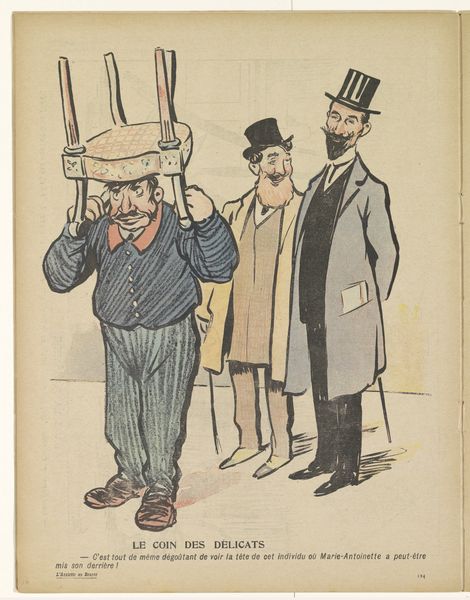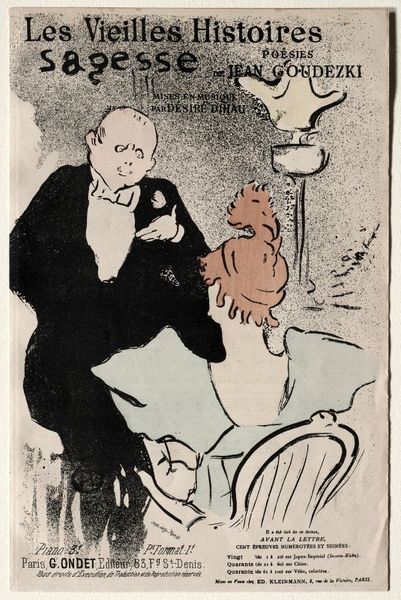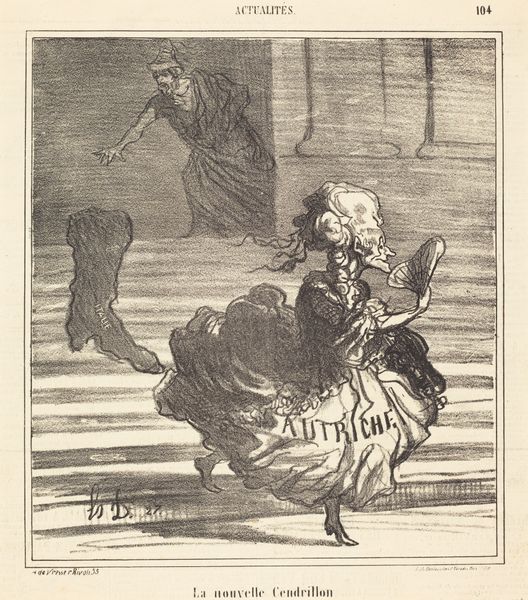
drawing, graphic-art, ink, pen
#
drawing
#
graphic-art
#
pen drawing
#
mechanical pen drawing
#
pen illustration
#
pen sketch
#
caricature
#
old engraving style
#
personal sketchbook
#
ink
#
pen-ink sketch
#
pen work
#
sketchbook drawing
#
pen
#
sketchbook art
#
modernism
Dimensions: height 770 mm, width 300 mm
Copyright: Rijks Museum: Open Domain
Curator: Here we have a piece entitled "Ontwerp voor een spotprent op de vereniging Kunst aan het Volk," which translates roughly to "Design for a Cartoon on the Association Art to the People." It's an anonymous work, believed to have been created sometime between 1903 and 1928, and rendered in ink using a pen drawing technique. Editor: It's wonderfully direct! The stark contrasts created by the ink sketch emphasize the caricatured features and almost theatrical expressions of the figures. There’s a compelling sense of immediacy in the artist's linework, isn’t there? Curator: Indeed. The technique contributes greatly to the message, as does the artist's choice of subject matter. Given the title, "Art to the People," and the rough appearance, it suggests a critique of the artistic establishment and perhaps the concept of art's accessibility to all social classes. Editor: Precisely. Looking at the imagery, it depicts labor so concretely. I am fascinated by the use of the cleaning woman and street worker. The artist comments on how social class dictates manual work and the means of production, or here the lack thereof, questioning who really gets to benefit from "art." The quote at the bottom definitely makes us think. Curator: I agree. The figures are clearly from different social strata based on dress and demeanor. Considering this was produced during a period of great social and political upheaval, there's a clear undercurrent of social commentary directed at this "Art to the People" organization. The association is a target in this composition. Editor: Yes, but note also the structural balance between the woman and the street worker as compositional weights. Their gaze creates tension, while their attire defines them immediately to the audience. Curator: And note the strategic use of shading to bring emphasis to the manual tasks depicted—the cleaning and maintenance of the streets and buildings by members of the lower working class. The bucket of coal is almost violently contrasted against the original intent of making art accessible for everyone. Editor: Exactly. And it forces us to consider art as a process involving labor and the commodification of art. The artist certainly gives us food for thought about how social and economic systems determine access and appreciation. Curator: It highlights how social movements aiming to be inclusive could still be inherently laced with class division despite their ambitions. An astute and challenging piece. Editor: In short, we both concur that form serves a distinct function, here exposing class tension and ultimately, its politics.
Comments
No comments
Be the first to comment and join the conversation on the ultimate creative platform.
